
超聲波(bō)清洗機:小(xiǎo)身材,大能量
作者:創始人來源:http://www.ahfanglei.com/時間:2025-01-25
在生活和工業生產(chǎn)中,清洗是一項必不可少的工作。從精密的電子元件到日常的眼鏡首飾(shì),從複雜的機械零件到各類光學儀器,清洗的質量直接影(yǐng)響著產品的性能和使用(yòng)壽命。而超聲波清洗機(jī),憑借其獨特的清(qīng)洗(xǐ)原理和高效的清洗(xǐ)效果,正(zhèng)逐漸成為清洗領域的 “明星產品”。
Cleaning is an essential task in both daily life and industrial production. The quality of cleaning directly affects the performance and service life of products, from precision electronic components to everyday eyewear and jewelry, from complex mechanical parts to various optical instruments. Ultrasonic cleaning machines, with their unique cleaning principles and efficient cleaning effects, are gradually becoming the "star products" in the cleaning field.
一、發(fā)展(zhǎn)曆程:從理論到應用的跨越(yuè)
1、 Development process: a leap from theory to application
超聲波(bō)清(qīng)洗技術的發展可以追溯到 20 世紀初。1914 - 1918 年,朗之萬(wàn)發明了夾心壓電換能器,為(wéi)超聲波技術的發展奠定了(le)基礎。20 世(shì)紀 20 年代,梅森發明變幅杆,與換能器連接可產生高強(qiáng)度超聲波振動。30 年代,美國無線電公司技術人(rén)員提出超聲波清洗技術。中國的超聲波清洗器件起始於 50 年代初,最初主要應用於電子、光學和醫藥等領域。隨著技術的不斷發展,70 - 80 年代,美國及歐(ōu)洲將(jiāng)超聲波技術廣泛運用到工業生(shēng)產上。90 年代後期(qī),超聲波清洗設備種類繁多(duō),技術逐漸走向成熟,高頻超聲波清洗(xǐ)設(shè)備的占比(bǐ)也越來(lái)越高。
The development of ultrasonic cleaning technology can be traced back to the early 20th century. In 1914-1918, Langevin invented the sandwich piezoelectric transducer, laying the foundation for the development of ultrasonic technology. In the 1920s, Mason invented a variable amplitude rod that, when connected to a transducer, can generate high-intensity ultrasonic vibrations. In the 1930s, American radio company technicians proposed ultrasonic cleaning technology. China's ultrasonic cleaning devices began in the early 1950s and were initially mainly used in fields such as electronics, optics, and medicine. With the continuous development of technology, in the 1970s and 1980s, the United States and Europe widely applied ultrasonic technology to industrial production. In the late 1990s, there were various types of ultrasonic cleaning equipment, and the technology gradually matured. The proportion of high-frequency ultrasonic cleaning equipment also increased.
二、工作原理(lǐ):神奇的 “空化效應”
2、 Working principle: magical "cavitation effect"
超(chāo)聲波清洗機的工作(zuò)原理主要基於超聲波的 “空化效應”。超聲波是頻率高於 20000 赫茲(zī)的(de)聲波,它具有方向性好、穿透能力(lì)強、易於獲得較集中聲能的特點。當超聲波在液(yè)體中傳播時,會使液體中的微氣泡在聲波的作用下保持振動(dòng)。在減壓力作用(yòng)時(shí),液體中產生真空核群泡;在壓縮力作用時,真空核群泡受壓力壓碎產生強大(dà)的衝(chōng)擊力,這種衝擊力能夠剝離被清洗物表麵的汙垢(gòu),達到精密洗淨的目的。
The working principle of ultrasonic cleaning machine is mainly based on the "cavitation effect" of ultrasonic waves. Ultrasonic waves are sound waves with frequencies higher than 20000 hertz, which have the characteristics of good directionality, strong penetration ability, and easy acquisition of concentrated sound energy. When ultrasound propagates in liquid, it causes microbubbles in the liquid to remain vibrating under the action of sound waves. When the pressure is reduced, vacuum nucleus bubbles are generated in the liquid; When subjected to compressive force, the vacuum core bubble is crushed by pressure to generate a strong impact force, which can peel off the dirt on the surface of the cleaned object and achieve precise cleaning.
除了空化作用,超聲(shēng)波在液體(tǐ)中還會產生直進流作用和加速度作用。直進流可使被清洗物表麵的微油汙垢被攪拌,促進汙垢表麵清洗液的對流,加快溶解汙物的溶解液與新液的融合,對汙物起到搬(bān)運作(zuò)用(yòng)。對於頻率較高(gāo)的超聲波清洗機,加速度作用則靠(kào)液體粒子在超聲作用下的加速度撞擊粒子(zǐ)對汙物進行超精密(mì)清(qīng)洗。
In addition to cavitation, ultrasound also produces direct flow and acceleration effects in liquids. Direct flow can stir the micro oil dirt on the surface of the cleaned object, promote the convection of the cleaning solution on the dirt surface, accelerate the fusion of the dissolved liquid and the new liquid, and play a role in transporting the dirt. For high-frequency ultrasonic cleaning machines, the acceleration effect relies on the acceleration of liquid particles under ultrasonic action to collide with particles for ultra precision cleaning of dirt.
三、結構組成:三大模塊協同(tóng)工作
3、 Structure composition: Three major modules work together
最簡單的超(chāo)聲(shēng)波清洗(xǐ)設備由超聲波發生器、換能器和清(qīng)洗槽三(sān)個模塊構成。
The simplest ultrasonic cleaning equipment consists of three modules: ultrasonic generator, transducer, and cleaning tank.
超聲波發生器的作用(yòng)是產生並向換能器提供超聲(shēng)能量,將市電轉換成與超聲(shēng)波換能器相匹配的高頻交流電信號。它就(jiù)像是(shì)超聲波清(qīng)洗機的 “心髒”,為整個清洗過程提供動力支持。其頻(pín)率自動跟蹤和振幅控製特性至關重要,能根據負載和工具磨損情況調整輸出功(gōng)率,保證清洗質量並保護(hù)超聲係統。
The function of an ultrasonic generator is to generate and provide ultrasonic energy to the transducer, converting the mains power into high-frequency AC signals that match the ultrasonic transducer. It is like the "heart" of an ultrasonic cleaning machine, providing power support for the entire cleaning process. The automatic frequency tracking and amplitude control characteristics are crucial, as they can adjust the output power according to the load and tool wear, ensuring cleaning quality and protecting the ultrasonic system.
換能器主要將超聲波發(fā)生器輸入的電功率轉化成高強度的機械振動功率傳遞到(dào)清洗槽(cáo)。在大功率超聲波清洗(xǐ)機中,常采(cǎi)用多個換能器組(zǔ)合組(zǔ)成換能器陣列,以(yǐ)提高聲電效率,加強清(qīng)洗效果。常見的換能器有壓(yā)電換能器和磁致(zhì)伸縮換能器。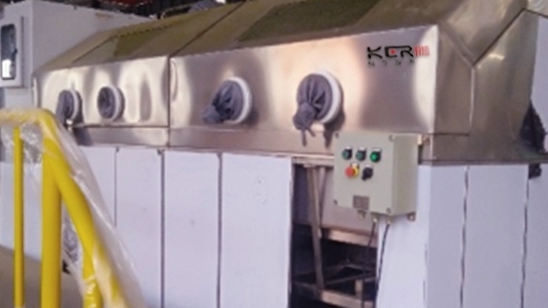
The transducer mainly converts the electrical power input by the ultrasonic generator into high-intensity mechanical vibration power and transmits it to the cleaning tank. In high-power ultrasonic cleaning machines, multiple transducers are often combined to form a transducer array to improve acoustic and electrical efficiency and enhance cleaning effectiveness. Common transducers include piezoelectric transducers and magnetostrictive transducers.
清洗槽通常使用不鏽鋼鋼板做成,換(huàn)能器和清洗槽粘連處的鋼板不能(néng)太厚,否(fǒu)則會(huì)減少聲能損失,粘貼麵需做磨砂處理,以確保換能器和清洗槽壁牢牢粘貼。而(ér)清洗槽(cáo)內壁與清洗液接觸,要進行拋光處理,減少對清洗槽的空化腐蝕。
The cleaning tank is usually made of stainless steel plate. The steel plate at the junction of the transducer and the cleaning tank should not be too thick, otherwise it will reduce the loss of sound energy. The bonding surface needs to be sandblasted to ensure that the transducer and the cleaning tank wall are firmly adhered. When the inner wall of the cleaning tank comes into contact with the cleaning solution, it needs to be polished to reduce cavitation corrosion of the cleaning tank.
四、分(fèn)類多樣:滿足不同需求
4、 Diverse categories: meeting different needs
根據(jù)用途的不同,超聲波清洗機可分為工業用、商用、實驗室用和家用超聲波(bō)清洗機。工業用(yòng)超聲波清洗機主要用於機械零部件、電子元件等的清洗,具有功率大、清洗效率高的特點;商用(yòng)超聲(shēng)波清洗機(jī)常(cháng)用於眼(yǎn)鏡店、珠寶店等(děng),清洗一些小型(xíng)物品;實驗室用超聲波清洗機對清洗精度要求(qiú)較高,可滿足科研實驗中的清洗(xǐ)需求;家用超聲波清洗機則操作簡單、體積小巧,適合清洗日常的(de)餐(cān)具、水果、眼鏡等。
According to different purposes, ultrasonic cleaning machines can be divided into industrial, commercial, laboratory, and household ultrasonic cleaning machines. Industrial ultrasonic cleaning machines are mainly used for cleaning mechanical components, electronic components, etc., and have the characteristics of high power and high cleaning efficiency; Commercial ultrasonic cleaning machines are commonly used in eyewear stores, jewelry stores, etc. to clean some small items; The laboratory ultrasonic cleaning machine requires high cleaning accuracy and can meet the cleaning needs in scientific research experiments; The household ultrasonic cleaning machine is easy to operate and compact in size, suitable for cleaning daily utensils, fruits, glasses, etc.
按自動化程度,又可分為全自動、半自(zì)動和(hé)手動超聲波清洗機。全自動超聲(shēng)波清洗機可實現一鍵操作,自動完成清洗、漂洗、幹燥等一係列流程;半自動超聲波清洗機需要人工輔助完成部分(fèn)操作;手動超聲波清洗機則主要依靠人工控(kòng)製清洗過程。
According to the degree of automation, it can be divided into fully automatic, semi-automatic, and manual ultrasonic cleaning machines. The fully automatic ultrasonic cleaning machine can achieve one click operation, automatically completing a series of processes such as cleaning, rinsing, drying, etc; The semi-automatic ultrasonic cleaning machine requires manual assistance to complete some operations; Manual ultrasonic cleaning machines mainly rely on manual control of the cleaning process.
此外,還可按容量、槽體數量、使用的(de)清洗劑等進行分類,不同類型的超聲波清洗機滿足了各行各業多樣化的清洗需求。
In addition, ultrasonic cleaning machines can be classified according to capacity, number of tanks, and cleaning agents used. Different types of ultrasonic cleaning machines meet the diverse cleaning needs of various industries.
五、優勢(shì)顯著:高效、環保(bǎo)又安全
5、 Significant advantages: efficient, environmentally friendly, and safe
超聲波清(qīng)洗機具有諸多優勢。首先,清洗效率高(gāo),它能夠快速去除(chú)各類汙垢,清洗速度(dù)比傳統清洗方法快數(shù)倍甚至(zhì)數十倍。其次,清洗效果好,能夠深(shēn)入清洗物體表麵的細微縫隙和孔(kǒng)洞,達到傳(chuán)統清洗方式難以企及的潔(jié)淨度,特(tè)別適用於表麵形狀複雜的零件清洗。再者,超聲波清洗機在(zài)清(qīng)洗過程中可減少化學溶劑的用量,降低(dī)環境汙(wū)染,更加環保。而且,它采用物理清洗方(fāng)式,對被清洗物體的損傷極小,保證了物品的安全性(xìng)。
Ultrasonic cleaning machines have many advantages. Firstly, it has high cleaning efficiency and can quickly remove various types of dirt. The cleaning speed is several times or even dozens of times faster than traditional cleaning methods. Secondly, the cleaning effect is good, which can deeply clean the fine gaps and holes on the surface of objects, achieving a cleanliness level that traditional cleaning methods cannot achieve, especially suitable for cleaning parts with complex surface shapes. Furthermore, ultrasonic cleaning machines can reduce the amount of chemical solvents used during the cleaning process, lower environmental pollution, and are more environmentally friendly. Moreover, it adopts a physical cleaning method, which causes minimal damage to the cleaned object and ensures the safety of the item.
隨著科技的不(bú)斷進步,超聲波清洗機將(jiāng)向著更高效、經濟、智(zhì)能化的方向發展。未來,91污有望看到(dào)更多新型的超(chāo)聲波清洗設備,為(wéi)91污的(de)生活和生產帶來更多便(biàn)利。
With the continuous advancement of technology, ultrasonic cleaning machines will develop towards higher efficiency, economy, and intelligence. In the future, we are expected to see more new types of ultrasonic cleaning equipment, bringing more convenience to our lives and production.
推薦產品
推薦文章
 公司:濟南科爾超聲波設備有限(xiàn)公司
公司:濟南科爾超聲波設備有限(xiàn)公司  熱線:18663767799
熱線:18663767799 地址:山東省濟南市濟陽區創業路與(yǔ)啟(qǐ)航街交叉口南40米(mǐ)
地址:山東省濟南市濟陽區創業路與(yǔ)啟(qǐ)航街交叉口南40米(mǐ)




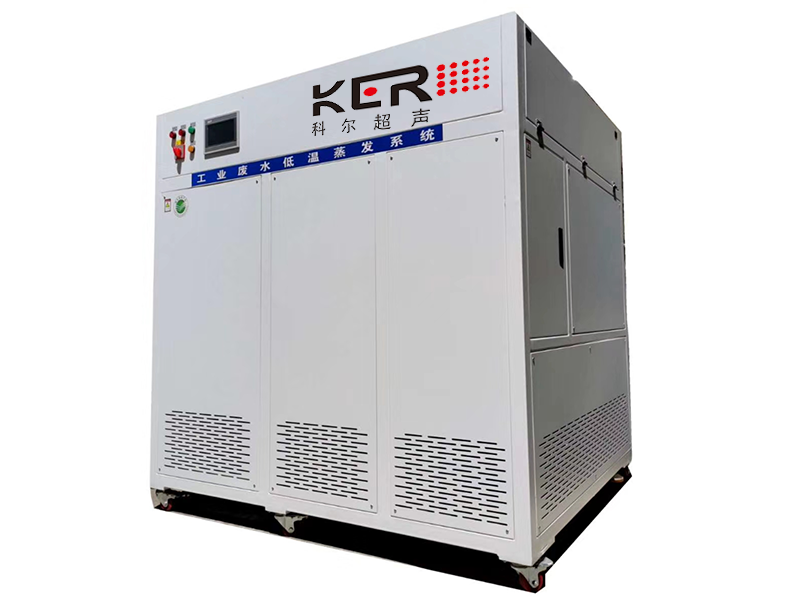
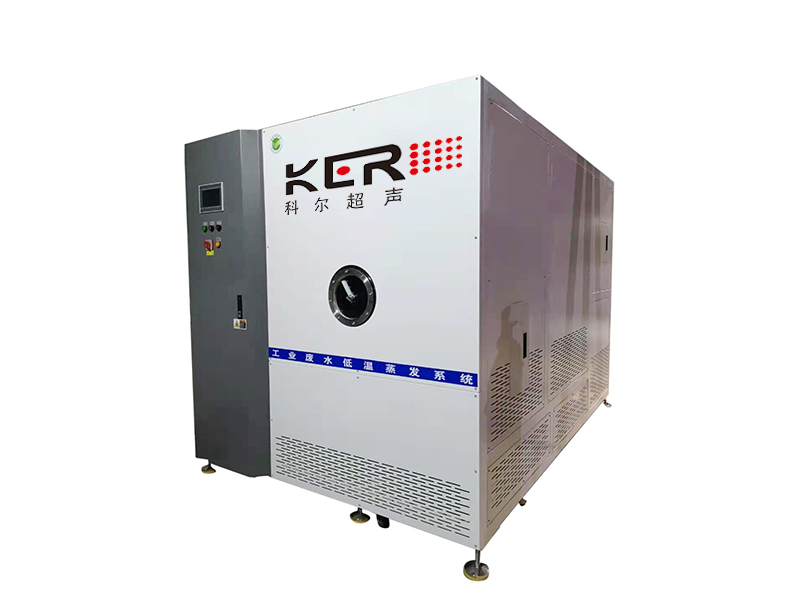
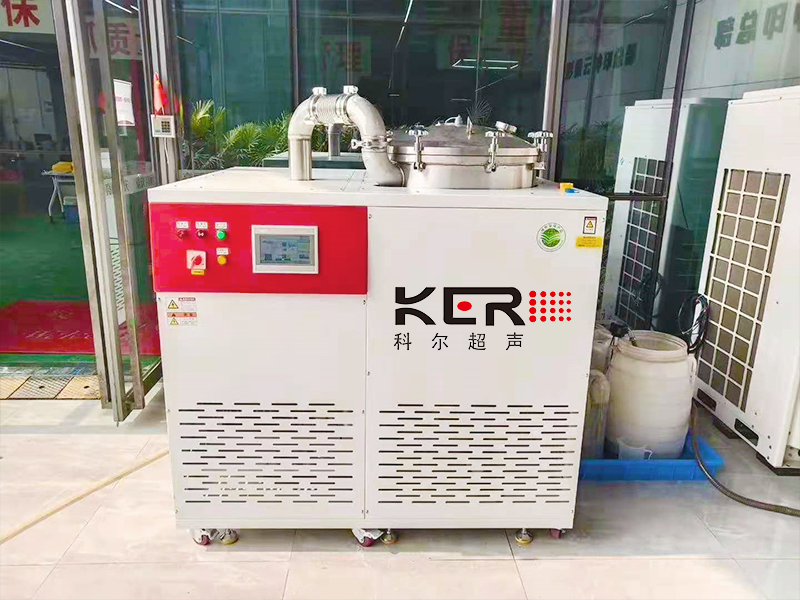
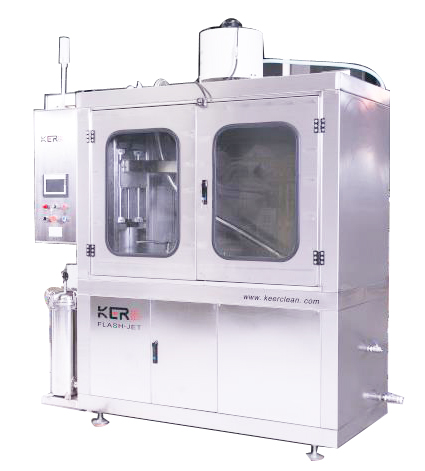
 常見問題
常見問題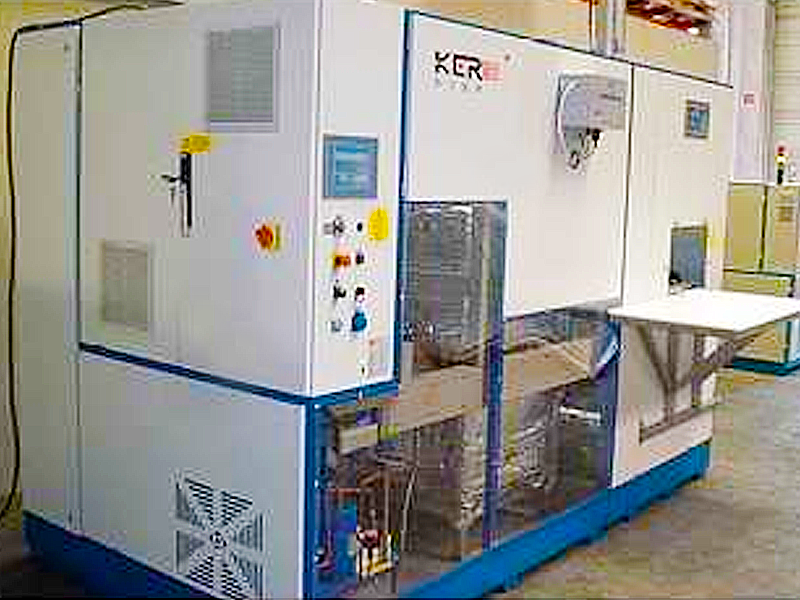
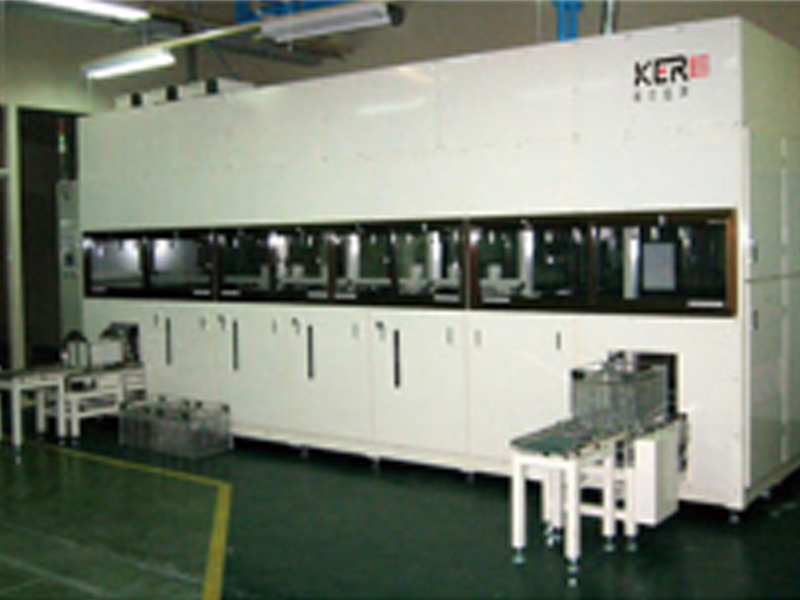
 聯係91污
聯係91污
 谘詢電話:18663767799
谘詢電話:18663767799 E-MAIL:jnkergs@163.com
E-MAIL:jnkergs@163.com 地址:山東省濟南(nán)市濟陽區創業路與啟航街交(jiāo)叉口南40米(mǐ)
地址:山東省濟南(nán)市濟陽區創業路與啟航街交(jiāo)叉口南40米(mǐ) 魯公網安備 37011202001385號
魯公網安備 37011202001385號
